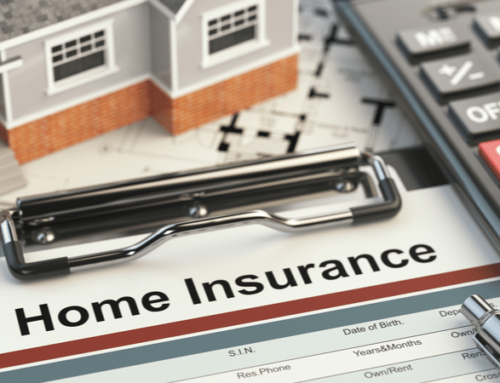
You took the plunge and bought a house to fulfill your own version of the American Dream.
Well, the fun has just begun. You’re going to need homeowner’s insurance coverage to protect your investment. The problem with insurance, in most cases, is you have to get it when you don’t need it because when you need it, you can’t get it.
Make sure the homeowner’s insurance policy you buy includes these four items:
1. Appropriate liability limit
Have you ever been sued and had to pay for an attorney out of pocket? I’ll bet you weren’t happy with the cost of that experience.
Within every homeowner’s insurance policy is a liability limit that will protect you if you are sued. The trick is that you have to decide how much liability coverage is enough.
Ask yourself what your stuff is worth and how much it would cost to replace everything you have at today’s prices. If your liability limit is less than the value of your house or your retirement account or both, then you’re probably underinsured.
Are you comfortable with that? Sometimes homeowners don’t want to pay for the right amount of homeowner’s insurance coverage, but if something happens and you have to liquidate assets to replace your belongings, is it worth it? And what happens if you don’t have enough money to replace the things you need, such as furniture, clothing, and electronics? The out-of-pocket expense of replacing these items will easily be a lot higher than the cost of the homeowner’s insurance premium for the proper amount of coverage.
2. Updated dwelling value
Since the housing bubble burst, there’s been a lot of controversy about homeowner’s insurance coverage for homes that have fallen in value.
In many places around the country, houses are selling for less than what people owe. In short, these properties are “underwater,” which isn’t a comfortable place for homeowners to be.
So why have some insurance companies increased the dwelling value limit on homeowner’s insurance policies?
Some carriers incorporate a 2 percent automatic inflation guard to protect the insured value. Depending on how long you’ve had the same policy or how long it’s been since you reviewed it, it’s possible the dwelling value limit may be overinflated.
Ask your agent to conduct a replacement cost estimator based on your home’s specifications (including square footage, the year the property was built, the number of bedrooms and baths, etc.). This will help determine an adequate value for your home so it is sufficiently insured in today’s real estate market.
3. Replacement cost
If your home is completely destroyed in a fire, you’ll want to have the replacement cost provision included in your policy to protect against inflation of materials and labor to rebuild your home.
Depending on the insurance carrier, the replacement cost could be between 125 percent and 200 percent of the dwelling value limit. Keep in mind, however, that despite the 2 percent automatic inflation guard, if the value of the home was not sufficiently insured initially, it could pose a problem in the event of a partial loss (which is more likely than a total loss of the property).
If the insurance carrier determines that the home was underinsured to begin with, the insured (that’s you!) would be responsible for coinsuring the loss.
I’ve made that call, and, let me tell you, it’s not a fun discussion to have with your clients.
4. Loss assessment
Loss assessment is a provision within a homeowner’s policy for condominium owners. It provides coverage for damage to the common area as a result of a covered claim. For example, let’s say the hallway outside your condominium catches fire and needs to be repaired.
If the association assesses each unit owner for a portion of the claim, the loss assessment part of your homeowner’s insurance coverage is tapped. Most carriers will automatically include this coverage in a typical homeowner’s insurance policy, but if you haven’t reviewed your insurance in a few years, you may need to update it to include this provision.
Let me remind everyone that insurance coverage was developed to protect against catastrophes. The first insurance contracts were out of London, protecting ships and their cargo if the ship sank. Insurance is not a maintenance contract, which is why wear and tear is excluded from homeowner’s insurance policies.
If you need a maintenance contract, buy an appliance with a warranty. If you want to protect your property from a physical catastrophe, be smart and buy the proper amount of homeowner’s insurance coverage.
Have you asked your agent to review your homeowner’s insurance policy recently? You might find you’re eligible for additional discounts or need to change the amount of coverage.
Linda Rey is a licensed insurance agent at Rey Insurance with a broad spectrum of expertise in life, accident, health, property and casualty insurance as well as retirement planning and college funding strategies.
Follow Linda on Twitter.






